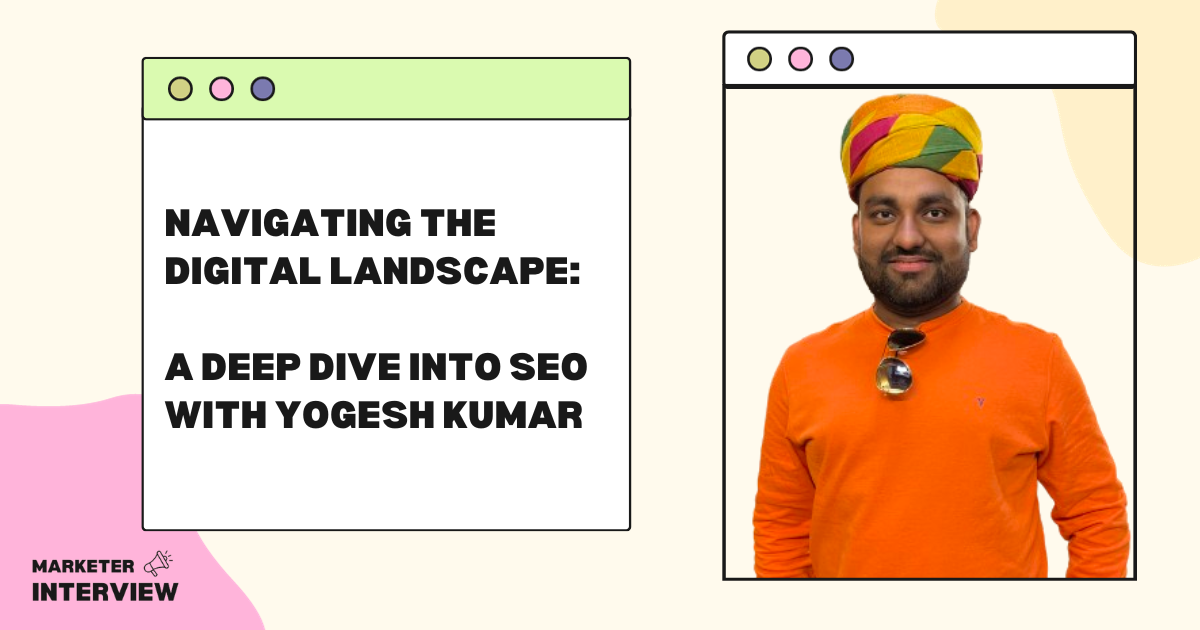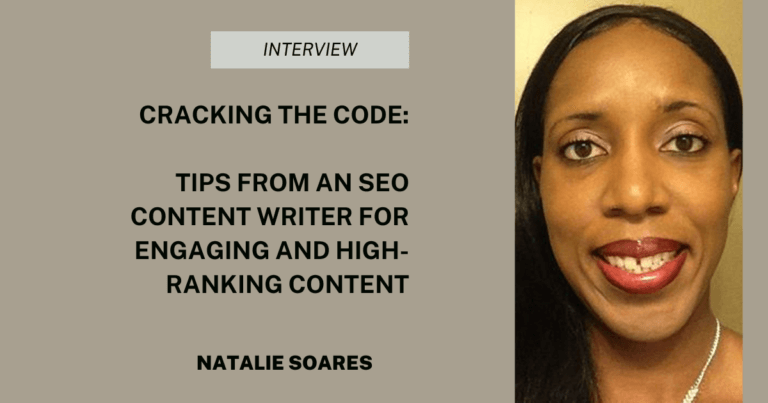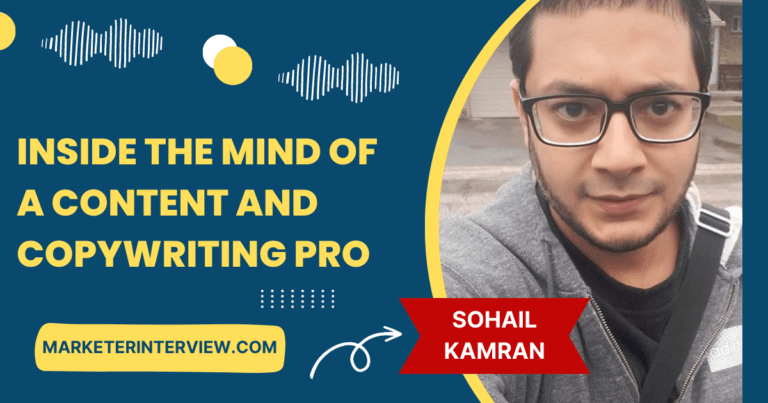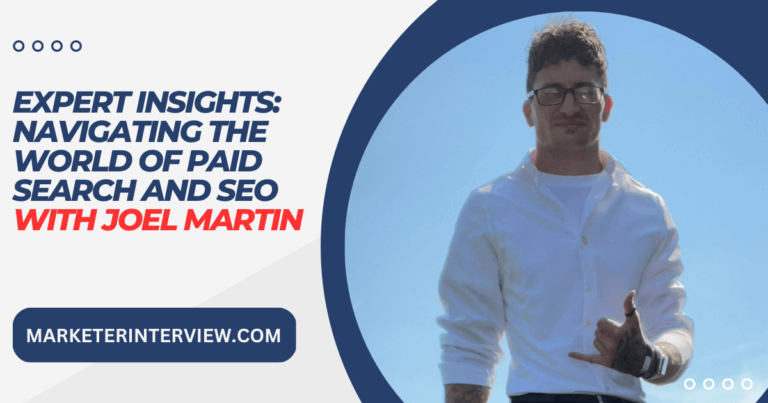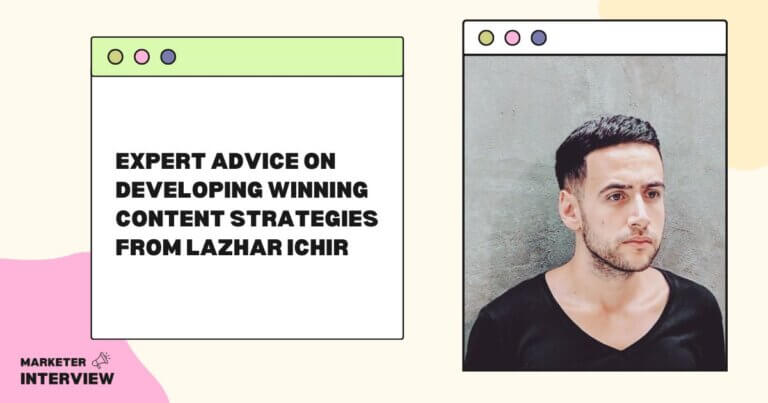Navigating the Digital Landscape: A Deep Dive into SEO with Yogesh Kumar
In the fast-evolving digital marketing realm, Yogesh Kumar is a seasoned professional, weaving his expertise through the intricate threads of SEO, content marketing, and beyond. Currently serving as the Digital Marketing Manager at Technource, Yogesh has left an indelible mark on the industry with over 8 years of experience.
Yogesh’s journey is about mastering the art of SEO and venturing into uncharted territories like Mobile App Marketing and Email Marketing.
Let’s explore Yogesh’s wealth of experience and the strategies that have propelled him to the forefront of the digital marketing landscape.
Contents
- 1 Can you share your journey into the marketing world and how you found your passion for SEO and digital marketing?
- 2 As the Digital Marketing Manager at Technource, what does a typical day in your role look like, and what aspects of digital marketing do you find most exciting?
- 3 Given your extensive experience, how have you seen the landscape of SEO and content marketing evolve over the years? What trends are currently shaping the industry?
- 4 You’ve been featured on various renowned platforms. How has this exposure impacted your career, and how do you approach building and maintaining a personal brand in the digital space?
- 5 Can you highlight a particularly challenging project you’ve worked on and the strategies you employed to overcome obstacles and achieve success?
- 6 SEO is a dynamic field. How do you stay updated on the latest trends and ensure that your strategies align with the ever-changing algorithms of search engines?
- 7 You handle SEO, SEM, SMO, ORM, ASO, and MPO in your role. How do these components work together to create a comprehensive digital marketing strategy, and how do you prioritize them based on specific business goals?
- 8 As someone deeply immersed in SEO, can you share your insights into the significance of on-page and off-page SEO and how they contribute to a holistic digital marketing strategy?
- 9 With your recent foray into Mobile App Marketing and Email Marketing, what motivated these expansions, and what unique challenges or opportunities have you encountered in these domains?
- 10 Considering your multifaceted role, what tools and software do you find indispensable for managing and optimizing digital marketing campaigns?
- 11 What advice would you give aspiring marketers to help them successfully navigate the dynamic and competitive landscape of digital marketing?
My journey into the marketing world began with a strong interest in Google SERP. I wonder if Google provides ranking itself. After some time, I learned that the rankings can be manipulated via a list of tasks covered under SEO. I was not from a Tech background, but my keen interest in SEO made me an SEO guy.
I initially worked in an SEO cum content writer role, handling various aspects of SEO. However, as the industry continues to evolve, I identify the ways to stay competitive. It was the time when I discovered my passion for SEO.
SEO always fascinated me because I need to polish my analytical thinking, research, strategic planning, and creativity skills. I enjoyed the challenge of optimizing content to rank higher in SERP, driving organic traffic, and improving online visibility for businesses and Branding. Witnessing the tangible impact of SEO on a company’s online presence and branding fueled my enthusiasm for the field.
For experience, I learned coding. I created a website by doing experiments and late-night studies to overcome a problem and make a solid foundation in traditional marketing principles.
Over time, I invested in continuous learning and professional development to stay updated on the ever-changing digital marketing landscape. I connect with SEO professionals on LinkedIn and actively engage with online communities to exchange insights and best practices.
As a digital marketing manager, my role involves developing comprehensive digital strategies, overseeing SEO initiatives, managing online advertising campaigns, and leveraging data analytics to optimize performance. I coordinate with various teams like development, design, content, and QA to ensure timely quality work and integrated marketing efforts across all channels.
What I find most interesting in SEO is the ability to track and measure the impact of my efforts. Seeing tangible results in increased website traffic, improved search rankings, and business growth validates the strategies implemented.
In summary, my journey into the marketing world evolved from my curiosity to a specialized focus on digital marketing, with a particular passion for SEO. The opportunity to make a direct and measurable impact on business success continues to drive my enthusiasm for this ever-evolving field.
As the Digital Marketing Manager at Technource, what does a typical day in your role look like, and what aspects of digital marketing do you find most exciting?
As the Digital Marketing Manager at Technource, my role involves strategic planning, data analysis, collaboration, and staying informed about industry trends.
Here’s a glimpse of my day:
1. Morning Routine: Check emails and communications for any urgent matters or updates from the team. Start the day by reviewing KPIs and analytics from the previous day or week to assess the overall performance of ongoing campaigns.
2. Campaign Management: Collaborate with the team to ensure that current marketing campaigns are running smoothly and meeting objectives. Analyze the performance of paid advertising campaigns (PPC and social media ads), making data-driven decisions to optimize for better results.
3. SEO Strategy: Monitor and analyze the website’s SEO performance. This includes checking keyword rankings, organic traffic trends, and user engagement metrics. Develop and implement on-page and off-page SEO strategies to improve the website’s visibility in SERP.
4. Content Planning: Work with the content team to plan and schedule upcoming content based on SEO insights and current industry trends. The content team creates the Mindmap, and the writing work starts after my approval. I use growth hacking to get the results quickly and implement skyscraper-like techniques to outperform the content.
5. Data Analysis: Dive into data analytics tools to gain insights into user behavior, conversion rates, etc. Use these insights to make informed decisions about refining marketing strategies and improving overall performance.
6. Collaboration: Meet with cross-functional teams, including content creators, designers, and developers, to discuss ongoing projects, address challenges, and ensure alignment with overall business goals. Also, coordinate with the PR agencies and guest post vendors for paid posts.
7. Stay Updated: Allocate time to stay informed about the latest Google algorithm updates, trends, and changes in the SEO. Read industry publications, connect with Industry leaders on Linkedin, and participate in online forums to keep abreast of best practices and emerging technologies.
8. Budget Management: Monitor and manage the digital marketing budget, ensuring that we did not cross the budget and that resources are allocated effectively across different channels and campaigns.
9. Reporting: Prepare and deliver regular reports to BDM and CEO, providing insights into the performance of efforts and demonstrating the ROI.
The Most Exciting Aspects were Impactful Results (brand awareness, lead generation, and revenue growth), Continuous Learning, and Creative Strategy, including experimentation.
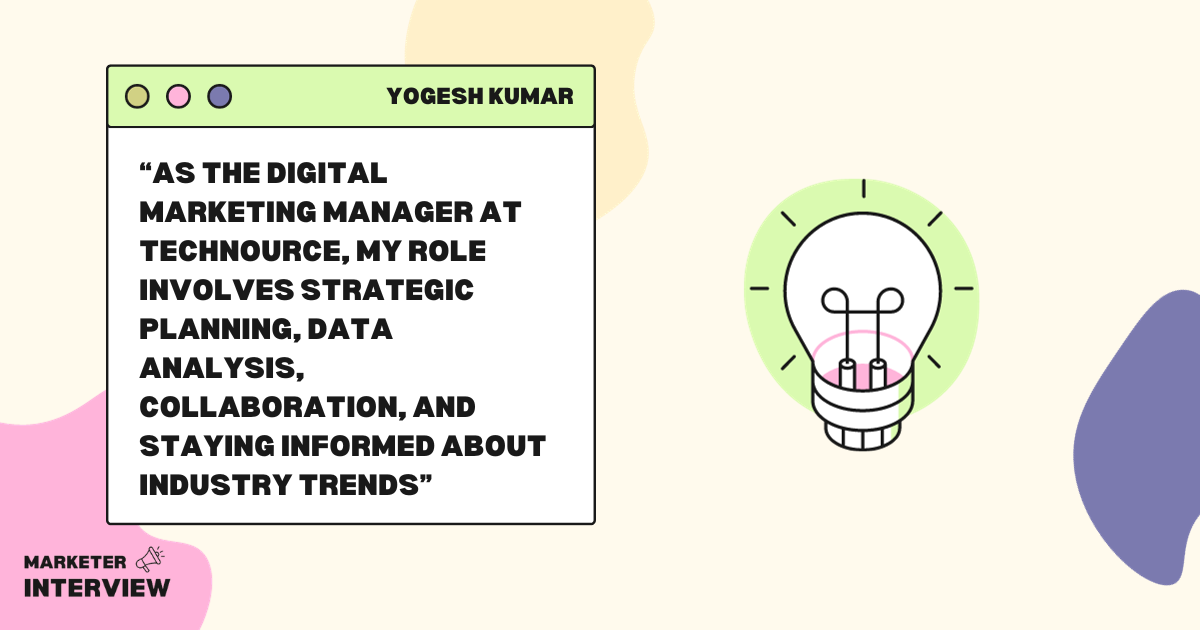
Given your extensive experience, how have you seen the landscape of SEO and content marketing evolve over the years? What trends are currently shaping the industry?
SEO and content marketing were transforming slowly, but after the pandemic, we suddenly saw a rise in memes and short visual content. Both focus on UX, mobile optimization, content quality, and adaptability to AI and other emerging technologies. Staying up to date and continuously evolving your strategies is very important in digital marketing.
Here are some key observations and trends currently shaping the SEO and content marketing industry:
1. User Intent and Search Experience: Search engines understand user intent. SEO strategies now focus on creating content that aligns with user needs, providing value to the user and a seamless search experience. Featured and rich snippets have gained prominence as they directly address user queries on SERP.
2. Core Web Vitals: Since page speed and mobile responsiveness play a crucial role in search rankings, Google’s emphasis on Core Web Vitals and page experience signals a focus on user satisfaction with website performance.
3. E-E-A-T (Experience, Expertise, Authoritativeness, Trustworthiness): Google’s algorithms prioritize content demonstrating experience, expertise, authoritativeness, and trustworthiness. Credibility in the content creation has become a critical factor in SEO success.
4. Mobile-First Indexing: Google has shifted to mobile-first indexing, so a website will be preferred if it is mobile-friendly and responsive.
5. Visual Search: The popularity of video content, GIFs, and Memes has surged, and search engines increasingly prioritize video results. Visual search, powered by technologies like image recognition, is also gaining traction.
6. Voice Search Optimization: The rise of voice-activated devices like Alexa and Google Homes has led to increased use of voice search. SEO strategies must now account for conversational queries and long-tail keywords that align with natural language.
7. Content Quality and Depth: Quality always outweighs quantity. Long-form, comprehensive content that thoroughly addresses a topic performs well in SERP. User engagement metrics (less bounce rates, time on page) are critical indicators of quality content.
8. AI: Search engines, notably Google, leverage AI algorithms to understand context and deliver more accurate search results. This affects how content is indexed, ranked, and displayed in search engine results.
9. Local SEO and Google My Business: Local search optimization has become crucial for businesses, with Google My Business playing a significant role in local search rankings. Optimizing for local keywords and ensuring accurate business information is essential.
10. Algorithm Updates and Volatility: Search engine algorithms undergo frequent updates, leading to fluctuations in rankings. SEO professionals must stay informed about algorithm changes and adapt strategies accordingly.
You’ve been featured on various renowned platforms. How has this exposure impacted your career, and how do you approach building and maintaining a personal brand in the digital space?
I appreciate the compliment. I have been featured on many platforms (Godady, AZBigMedia, AllBusiness, HR, Techbullion, and 50+ more.. ). Time and effort are required to build a personal brand. Building a personal brand is an ongoing process.
Here are some general strategies to build and maintain a personal brand-
1. Consistent Online Presence (LinkedIn, guest blogs, and relevant industry forums)
2. Thought Leadership by contributing meaningful content that adds value to your industry.
3. Networking (Connect with peers, leaders, and influencers online and offline.
4. Create and share content that reflects your expertise.
5. Recommendations
6. Optimize your social media profiles with a professional photo, a compelling bio, and relevant keywords.
7. Continuous Learning
8. Be authentic, it builds trust.
Impact on Career: A well-established personal brand can open doors to new opportunities, partnerships, and collaborations. Increased visibility within the industry may also lead to collaboration with other professionals.

Can you highlight a particularly challenging project you’ve worked on and the strategies you employed to overcome obstacles and achieve success?
One of the most challenging projects was an eCommerce website. The client wanted to migrate it to PHP Laravel from ROR, redesign it for better UX, and rebrand it while preserving the SEO (organic search visibility).
Obstacles Faced:
1. Technical Challenges: The migration from ROR to Laravel posed technical challenges, risking website functionality disruptions and potential loss of SEO equity.
2. Team Alignment: Coordinating with the client’s internal teams and external members was a complex task.
3. SEO Transition: Maintaining the existing organic traffic to prevent potential revenue loss took a lot of work.
Strategies Employed:
1. Thorough Planning: Developed a detailed project plan outlining every phase of the migration and rebranding process.
2. Collaborative Communication: Conducted regular meetings to address concerns, updates, and feedback. Connect with all the teams on Slack to ensure everyone is aligned on project goals, timelines, and expectations.
3. SEO Preservation Strategy: Implement various strategies, including 301 redirects for all the URLs that are getting organic traffic but do not exist on new websites. Canonical tags and XML sitemap optimization will smoothly guide search engines through the transition. Monitor key SEO metrics before, during, and after the migration.
4. User Experience Testing: Conducted extensive user experience testing with the help of the QA team throughout the redesign process, addressing any issues that could impact the website’s usability and overall customer satisfaction.
5. Continuous Monitoring and Optimization.
Results: Successful Website Launch with Increased Conversion Rates and Preserving SEO Rankings.
SEO is a dynamic field. How do you stay updated on the latest trends and ensure that your strategies align with the ever-changing algorithms of search engines?
Staying updated in the dynamic field of SEO is crucial for developing effective strategies that align with the ever-changing algorithms of search engines.
Here are the critical approaches I take to stay abreast of the latest trends:
- Hands-on experimentation can provide valuable insights and help validate or refine strategies. So, I do experimentation and testing.
- Regularly read reputable SEO publications, industry blogs, and forums like SearchEngineRoundtable, Search Engine Journal, Moz, and SEMrush to stay informed about the latest developments.
- Stay updated on search engine guidelines, especially those provided by Google. Participate in online forums and communities (like SEOchat, Reddit (r/SEO), and WebmasterWorld).
- Regularly check official resources like Google’s Webmaster Central Blog and use Google Search Console to gain insights into how search engines view and crawl your website.
- Follow industry discussions on social media platforms, particularly LinkedIn. Many SEO professionals and experts share real-time updates and insights.
- Stay informed about updates from popular SEO tools and platforms like Ahrefs, SEMrush, Moz, SerferSEO, etc.. These tools often integrate the latest features to adapt to algorithm changes and provide new ways to analyze and optimize websites.
- Network with other SEO professionals, both online and offline. Discussing challenges, sharing experiences, and exchanging insights with peers can provide a broader perspective on industry trends.
- Listen to SEO-focused podcasts that feature discussions on current trends, case studies, and expert interviews.
This proactive stance helps in adapting strategies to algorithm changes, staying ahead of industry trends, and ultimately delivering effective SEO results for the businesses I work with.
You handle SEO, SEM, SMO, ORM, ASO, and MPO in your role. How do these components work together to create a comprehensive digital marketing strategy, and how do you prioritize them based on specific business goals?
It is essential to make a comprehensive strategy to achieve specific business goals. Let’s explore each expect of digital marketing and how these work together as well as how to prioritize these elements:
1. SEO: It focuses on optimizing the structure and content of a website to improve visibility in SERP. SEO is foundational, providing a solid organic presence. It contributes to long-term visibility, brand credibility, and sustainable traffic growth.
2. SEM involves paid advertising on search engines, typically through platforms like Google Ads. It includes strategies like PPC (Pay-Per-Click) advertising. SEM complements SEO by providing immediate visibility through paid channels. It’s especially effective for targeted campaigns, promotions, or when seeking quick results.
3. SMO: It focuses on optimizing social media profiles and content for visibility and engagement on various social media platforms. SMO enhances brand visibility and fosters community engagement. It complements SEO by creating additional user touchpoints and driving social signals that may influence search engine rankings.
4. ORM (Online Reputation Management): ORM monitors and manages online reviews, mentions, and overall sentiment to maintain a positive online brand reputation. ORM is crucial for building trust. A positive online reputation, achieved through ORM efforts, can positively impact SEO and contribute to the brand’s overall credibility.
5. ASO (App Store Optimization): ASO is optimizing mobile applications for app stores to improve visibility and downloads. ASO is essential for businesses with mobile apps. It ensures the app is discoverable and ranks well within app store search results, contributing to overall brand visibility.
6. MPO (Multichannel Paid Media Optimization): MPO involves optimizing paid media campaigns across various channels, including display advertising, social media advertising, and other online advertising platforms. MPO aligns with SEM but extends beyond search engines to cover multiple channels. It ensures a consistent and optimized approach to paid media campaigns across the digital landscape.
Prioritization Based on Business Goals:
If a client wants brand awareness and visibility:
- Priority: SEO, SEM, SMO
- Rationale: Establish a solid online presence through SEO for long-term visibility. Supplement with SEM for immediate results and SMO to enhance brand visibility and engagement on social platforms.
If a client wants online reputation management:
- Priority: ORM, SEO, SMO
- Rationale: Protect and enhance the brand’s online reputation through proactive ORM efforts. Leverage SEO and SMO to reinforce positive brand messaging and engage with the audience.
If a client wants mobile app promotion:
- Priority: ASO, SEM, SMO
- Rationale: Optimize app visibility through ASO, supplement with SEM campaigns to drive downloads, and utilize SMO to create awareness and engagement.
If a client wants multichannel marketing and conversions:
- Priority: MPO, SEM, SEO
- Rationale: Optimize paid media campaigns across multiple channels through MPO, complemented by targeted SEM efforts for quick conversions. Leverage SEO for sustained organic traffic and conversions.
The prioritization may vary based on the specific goals and industry of the business. Analyzing performance metrics and adjusting strategies accordingly is critical to maintaining a practical and adaptive digital marketing approach.
SEO is divided into two main components: On-page and off-page. Each plays an important role in optimizing your website for search engines. These both also help to increase online presence.
1. On-Page SEO
It refers to optimizing individual web pages to improve search engine rankings and attract relevant organic traffic. It involves optimizing various elements directly on the website.
Key elements include optimizing content, title tags, header, URL structure, internal linking, image, and page speed.
Significance:
On-page SEO is fundamental as it directly influences how search engines understand and rank individual web pages. It helps search engines identify the relevance and value of content, improving the chances of ranking higher in search results. Focus on on-page SEO enhances the user experience by delivering well-structured and informative content.
2. Off-Page SEO:
It refers to activities conducted outside the website to improve its visibility and credibility. It involves building relationships and acquiring links from other reputable websites.
The key elements are link building, influencer outreach, online reputation management, content marketing, tracking brand mentions, etc.
Significance:
Off-page SEO contributes to the website’s authority and trustworthiness in the eyes of search engines. High-quality backlinks from reputable sources act as votes of confidence, signaling to search engines that the content is valuable and credible. Off-page SEO extends the website’s reach beyond its domain, fostering a broader online presence.
A holistic digital marketing strategy identifies the symbiotic relationship between on-page and off-page SEO. By using both, businesses can create a solid online presence, enhance their visibility in SERP, and build credibility and authority within their industry.
With your recent foray into Mobile App Marketing and Email Marketing, what motivated these expansions, and what unique challenges or opportunities have you encountered in these domains?
The recent foray into Mobile App Marketing and Email Marketing stemmed from a strategic approach to diversify and expand our digital marketing efforts, recognizing the growing significance of these channels in reaching and engaging target audiences.
The motivations for expanding into Mobile App Marketing and Email Marketing were rooted in the desire to meet evolving user preferences, enhance user engagement, and diversify our digital marketing channels.
Challenges in these domains are met with a proactive and data-driven approach, while opportunities lie in creating personalized, targeted, and integrated marketing campaigns across multiple touchpoints.
Considering your multifaceted role, what tools and software do you find indispensable for managing and optimizing digital marketing campaigns?
The choice of tools may vary based on specific business needs, budget considerations, and the scale of operations.
Here are some tools that I find essential:
1. Analytics and Data Management: Google Analytics and Google Tag Manager.
2. SEO Tools: Moz, SEMrush, Ahrefs, Google Search Console, SurferSEO.
3. Paid Advertising (SEM) Tools: Google Ads, Facebook Ads Manager.
4. Social Media Management: Hootsuite, Buffer, Sprout Social.
5. Email Marketing: Buzzstream, Mailchimp, Constant Contact, HubSpot.
6. Content Creation and Collaboration: Canva, Quetext, Trello.
7. Website Optimization: Optimizely, VWO (Visual Website Optimizer), Hotjar
8. Mobile App Analytics: Firebase, App Annie.
9. Online Reputation Management (ORM): Brandwatch, Reputology, Google alerts
10. Reporting and Dashboards: Google Data Studio, Databox.
11. Marketing Automation: HubSpot, Marketo.
12. Communication and Collaboration: Slack, Zoom.
You require skills, a strategic mindset, and adaptability to succeed in the DM world. Specialize in specific areas of digital marketing, such as SEO, Social media, SEM, or email marketing.
Focus on continuous learning because the digital marketing landscape is ever-evolving. Read industry blogs and invest time to stay updated on the latest trends and technologies. Understand consumer behavior principles, market research, and traditional marketing before diving into digital strategies. Gain hands-on experience on personal projects to apply theoretical knowledge.
Focus on decision-making based on research and data. Develop your creative skills (in content creation, design, or campaign ideation). Know your audience and understand their journey. Map out the customer’s path from awareness to conversion since SEO is dynamic, with trends and algorithms changing frequently. Be adaptable and open to change.
Build a professional network within the industry. Be active on professional platforms, share your knowledge, and contribute to discussions. Be proactive and always strive to deliver value to your audience and clients.
